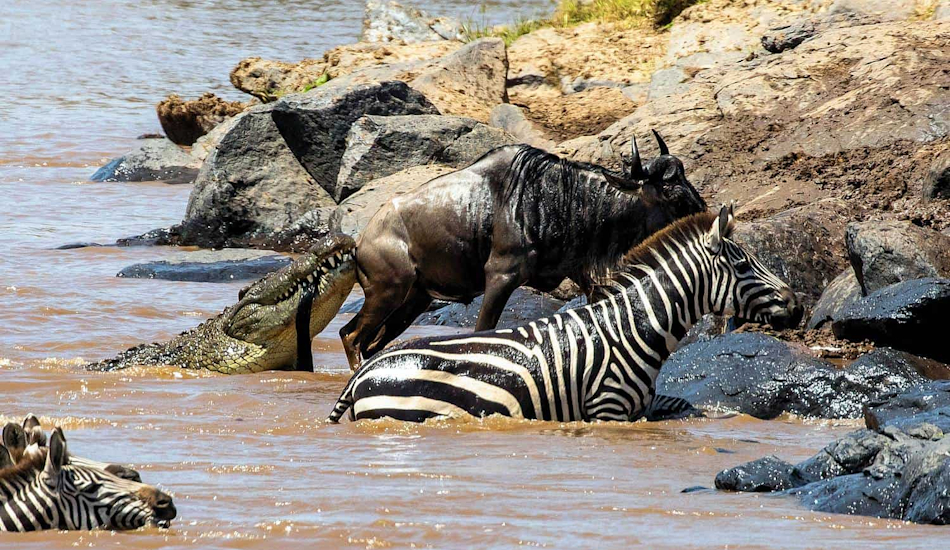Overview
A 13-day “Unforgettable Kenya & Tanzania Safari” is an incredibly popular and comprehensive itinerary designed to immerse travelers in the very best wildlife and cultural experiences that East Africa has to offer. While specific routes and accommodations can vary between tour operators, the general overview typically includes:
Core Destinations & Highlights:
Kenya:
Maasai Mara National Reserve: This is often the pinnacle of the Kenyan portion, famous for its abundant wildlife, including the “Big Five” (lion, leopard, elephant, rhino, and buffalo), and the incredible Great Migration (July to October) where millions of wildebeest and zebra cross the Mara River. Activities often include extensive game drives, hot air balloon safaris (optional), and cultural visits to Maasai villages.
Lake Nakuru National Park: Known for its stunning flamingo populations (when water levels allow), as well as a sanctuary for black and white rhinos, Rothschild’s giraffes, and various other wildlife.
Amboseli National Park: Offers breathtaking views of Mount Kilimanjaro (on clear days) as a backdrop to large herds of elephants, along with other plains game and predators.
Nairobi (often for arrival/departure): May include visits to attractions like the David Sheldrick Wildlife Trust (elephant orphanage) and the Karen Blixen Museum.
Other potential Kenyan parks: Some itineraries might include Tsavo East/West, Lake Naivasha (for boat rides and walking safaris), or Samburu National Reserve in the north.
Tanzania:
Serengeti National Park: The extension of the Maasai Mara, equally renowned for its vast plains, incredible wildlife density, and the year-round Great Migration. Game drives are the primary activity.
Ngorongoro Crater: Often referred to as the “8th Wonder of the World,” this UNESCO World Heritage Site is a massive, intact volcanic caldera teeming with an incredible concentration of wildlife, offering excellent opportunities for “Big Five” sightings within a relatively small area.
Tarangire National Park: Known for its large elephant herds, baobab trees, and diverse birdlife, especially during the dry season when the Tarangire River becomes a magnet for animals.
Lake Manyara National Park: Famous for its tree-climbing lions (though sightings can be elusive), a diverse array of birdlife, and a scenic landscape including a soda lake.
Arusha (often for arrival/departure in Tanzania): A common starting or ending point for Tanzanian safaris.
Typical Activities:
Game Drives: The primary activity, conducted in 4×4 safari vehicles (often with pop-up roofs for optimal viewing and photography) within the national parks and reserves.
Cultural Visits: Opportunities to interact with local Maasai communities and learn about their traditions and way of life.
Optional Activities:
Hot Air Balloon Safaris: A magical way to see the landscape and wildlife from above, often followed by a champagne breakfast in the bush.
Walking Safaris: Guided walks in designated areas to experience the bush on foot and learn about smaller flora and fauna.
Boat Rides: On lakes like Naivasha or Victoria, offering a different perspective and opportunities to see hippos and various bird species.
Logistics & Accommodation:
Accommodation: Ranges from mid-range to luxury tented camps and lodges, offering comfort and immersion in the wild. Some budget-friendly options also exist, often involving camping.
Transportation: Typically involves 4×4 safari vehicles for game drives and transfers between parks. Depending on the itinerary, internal flights might be used to save travel time between countries or distant parks.
Cross-border travel: Involves crossing the border between Kenya and Tanzania (e.g., at Isebania or Namanga), which requires visas for both countries.

